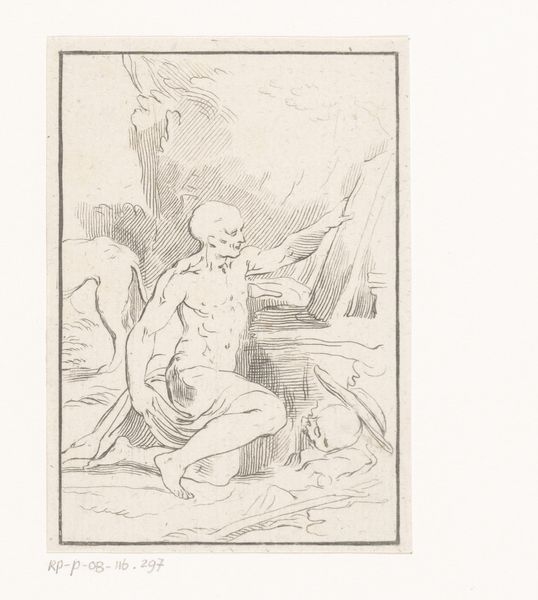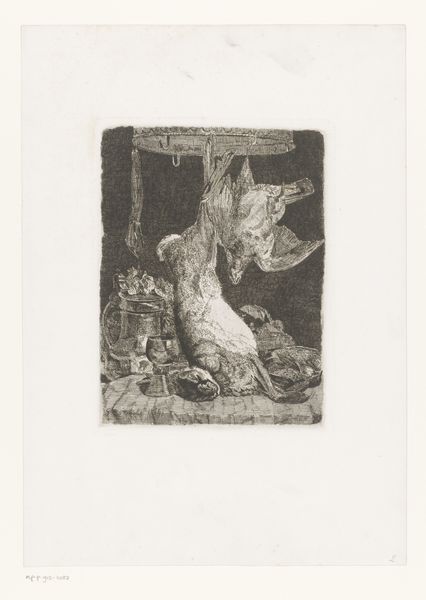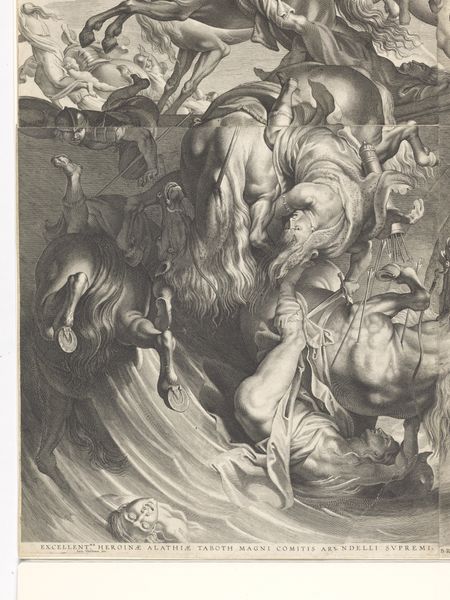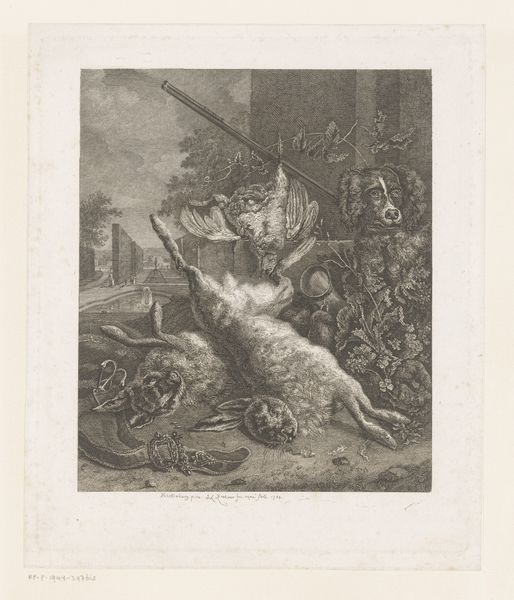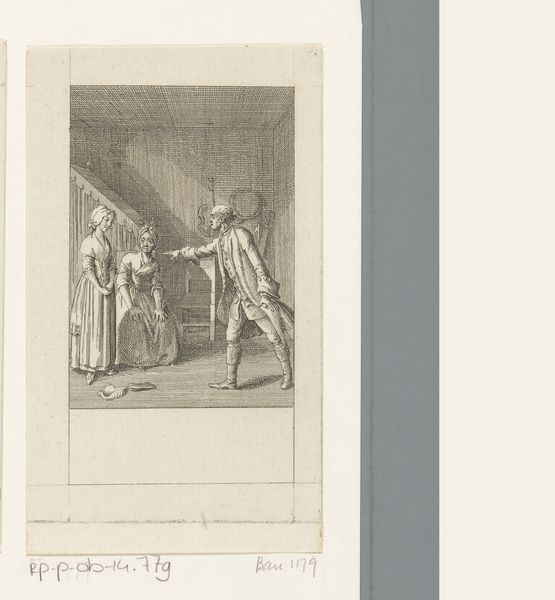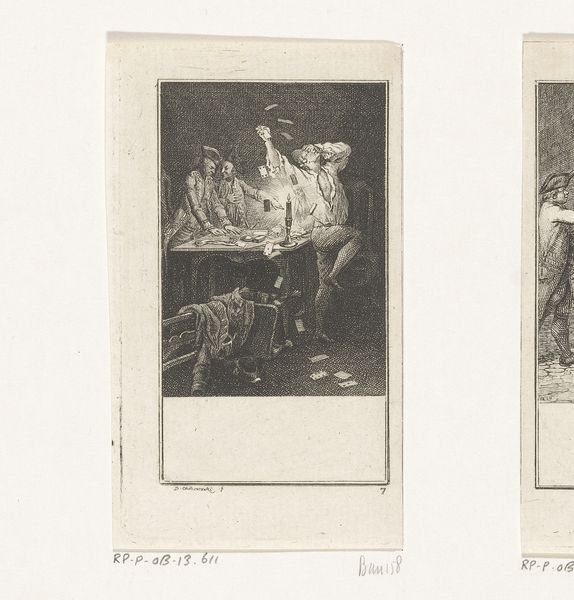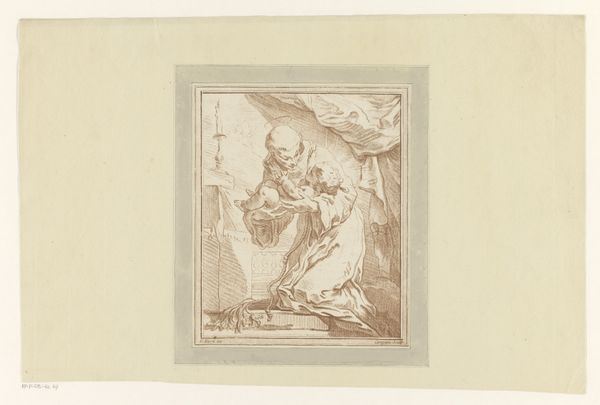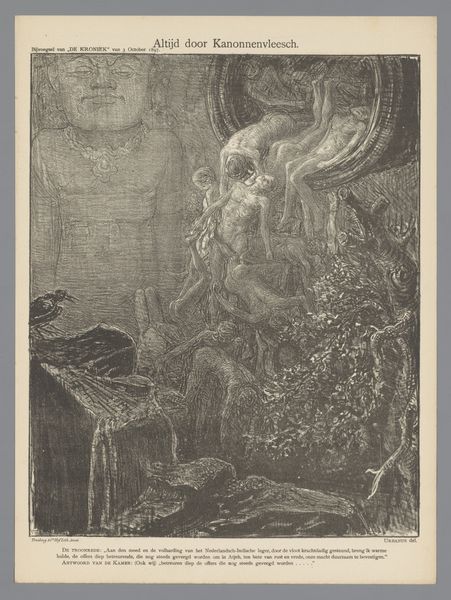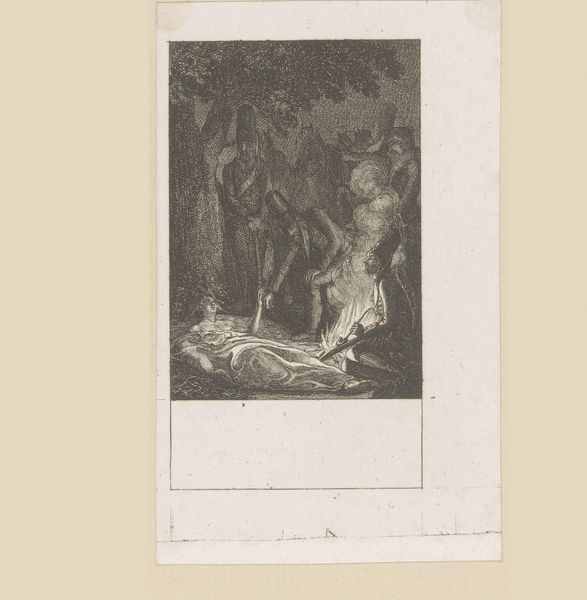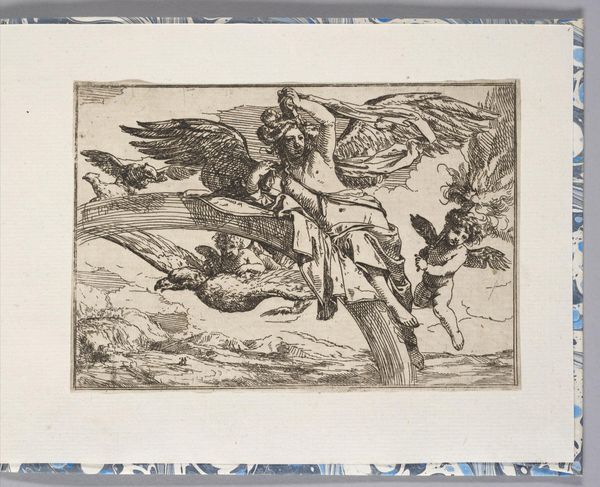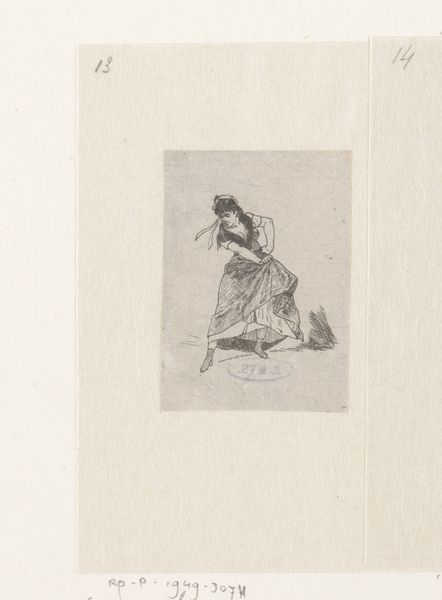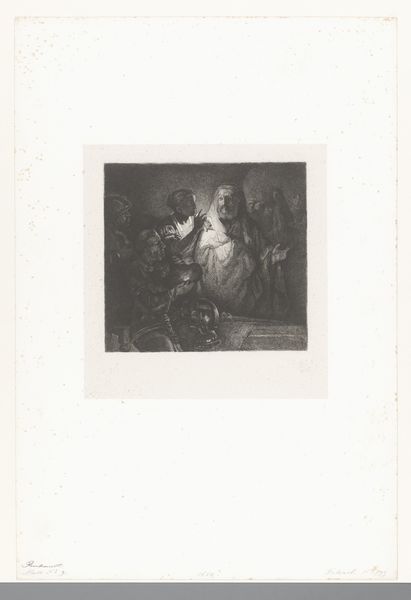
Dimensions: height 115 mm, width 80 mm
Copyright: Rijks Museum: Open Domain
Editor: Here we have Carl Friedrich Holtzmann's "Maria Magdalena," an intaglio print dating between 1750 and 1811. It feels quite theatrical, doesn't it? The figure’s pose is so dramatic against the roughly sketched background. How do you interpret the scene's socio-political meaning? Curator: It’s interesting you say theatrical. I immediately think of the performance of piety and repentance so central to the period. Think about how religious imagery was consumed and disseminated through prints like these. The art market, even then, was powerfully shaped by socio-religious norms. Editor: So, was it a challenge to present religious figures in this manner? Were there specific societal expectations? Curator: Precisely. Consider the prevailing notions of morality. Depicting Mary Magdalene nude was potentially transgressive. This Romanticized portrayal emphasizes emotionality and her inner turmoil, and could possibly be seen as humanizing her within specific devotional contexts. Editor: I notice the skull near her feet. Is it supposed to remind viewers of mortality and redemption? Curator: Definitely. Visual cues, such as the skull, play a vital role. The politics of imagery dictated that she must be both penitent and beautiful. Ask yourself: How did these types of representations of women serve societal power structures and control? Editor: I hadn't considered that so deeply. The composition is now loaded with greater historical nuance for me! Curator: Indeed! These historical considerations highlight art's role as a cultural reflection but also an active force in negotiating social standards and norms.
Comments
No comments
Be the first to comment and join the conversation on the ultimate creative platform.
